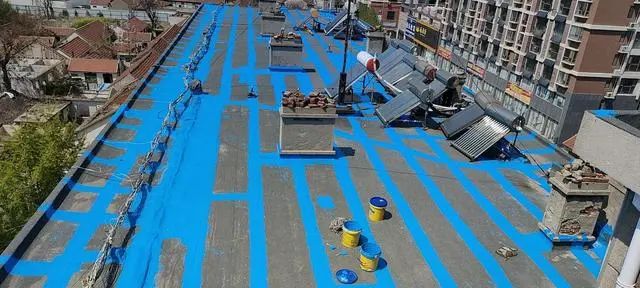It's often said that materials account for 30%, while construction accounts for 70%. It's not uncommon for workers or homeowners to encounter various issues when using waterproofing materials.
So, how can we most effectively harness the properties of these materials to ensure their durability and effectiveness? We've compiled some common issues and solutions encountered by our workers during construction to help you avoid making the same mistakes.

Leak Sealant Issues
Q: Severe leakage on the basement sidewalls with high water pressure. The leak sealant cannot stop the water. How to handle this?
A: For a quick fix, you can use leak sealant to wrap a water pipe with a stop valve for temporary sealing. For a permanent solution, you need to create a waterproof curtain on the exterior side of the basement wall.
Elastic Grouting Adhesive
Q: Does elastic grouting adhesive have flexibility? Can it last five years in a bathroom?
A: It has some flexibility. If applied according to standards, it can last for five years.
Sand Hardening Agent
Q: Can the sand hardening agent be diluted with water?
A: It can be diluted with 30% water, but it's generally not recommended.
Q: How much area can 1kg of sand hardening agent cover?
A: It can cover 3-4 square meters.
Interior Wall Waterproof Putty
Q: How to handle wall dampness near the bathroom door?
A: Remove the plaster from the wall, apply a layer of waterproof coating (reinforced waterproofing two-in-one), and then use interior wall waterproof putty.
Acrylate Grouting Solution
Q: How to address leakage from the bottom slab of an underground water tank?
A: Inspect the leakage points, excavate the area, use leak sealant to create a dry condition, insert pins (inject acrylate), and apply universal glue.
Two-Component Polyurethane
Q: What causes the "A" component of polyurethane to cure prematurely?
A: This could be due to poor sealing of the container, allowing moisture to enter and trigger a curing reaction. It may also happen if the material has been stored for too long, as polyurethane can cure even without a hardener over time.
Liquid Waterproof Membrane
Q: After applying two layers of liquid waterproof membrane and a protective layer of fine mortar, small cracks appeared in the first few days, worsening after two weeks. Why?
A: When the mortar is over 5 cm thick, a mesh reinforcement should be considered. For exposed areas, a protective layer is necessary. It's better to use fine aggregate concrete instead of polymer cement mortar, as the latter is expensive, can't be applied thickly, and is prone to cracking when applied too thin.
Wall Primer (Wall Bond)
Q: After adding cement, yellow sand, and elastic adhesive to wall primer for roughening, it crumbles easily. Why?
A: Proper construction techniques must be followed. The cement-to-primer ratio should generally be 1:2.5.




